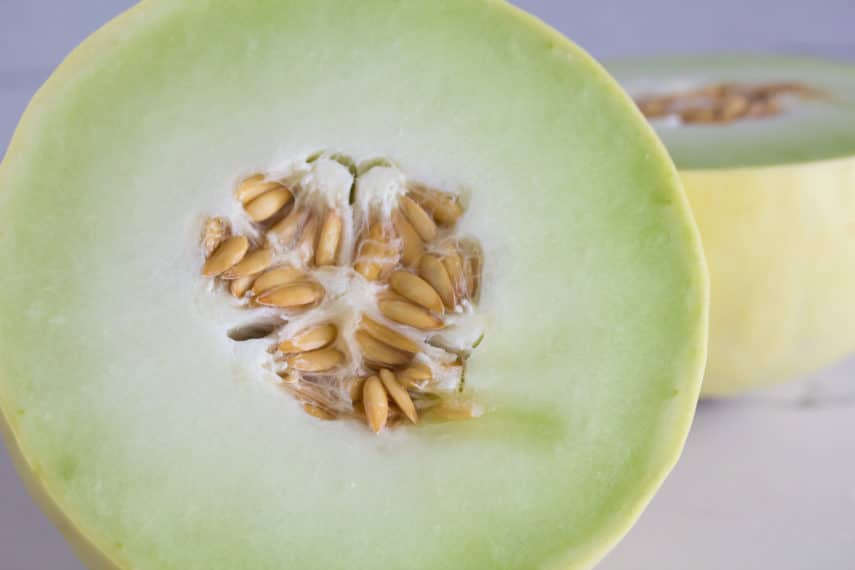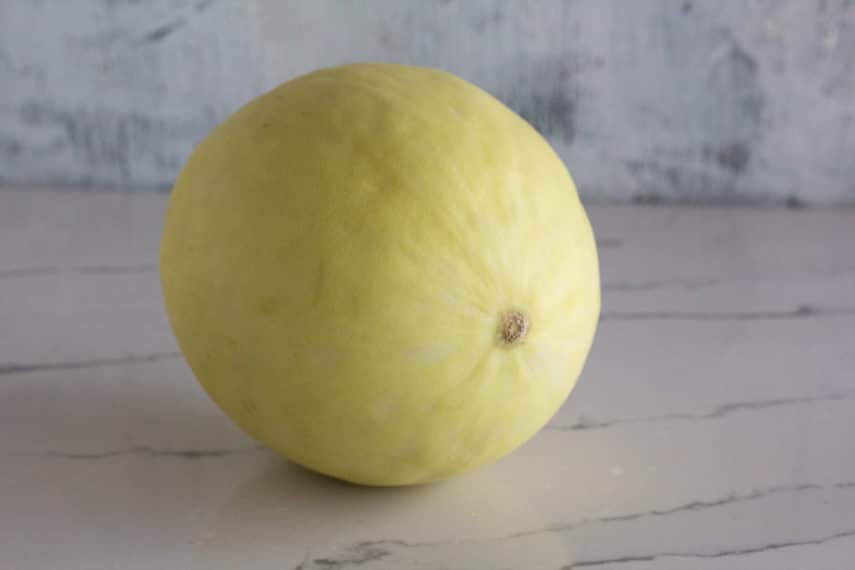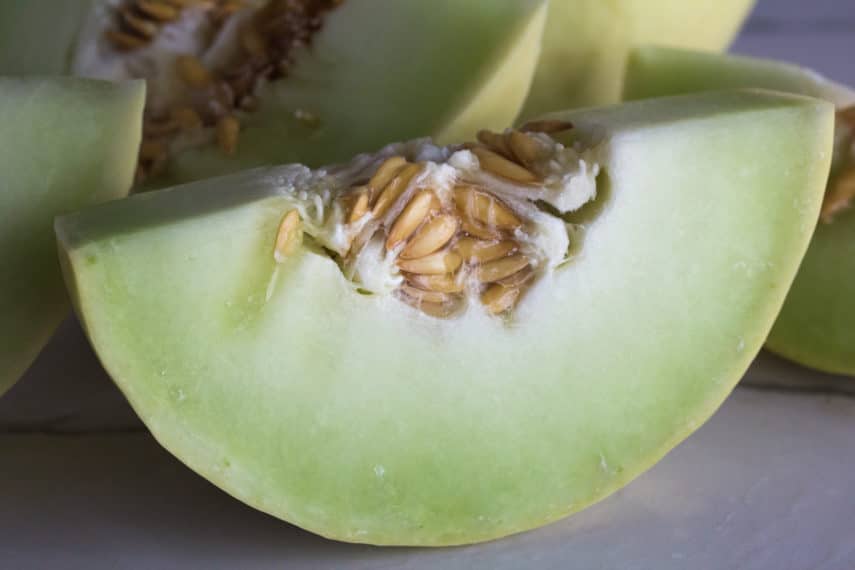About Honeydew Melon
Monash University recommends ½ cup servings (90 g). Cut the melon into small pieces to measure.

Cucumis melo – a variety of muskmelon, along with the cantaloupe, after which it is possibly the most popular of the muskmelons. They are easy to find in supermarkets and at farmer’s markets and we like eating them with a squeeze of lime over a fat, juicy slice, frozen for smoothies, used for a cold soup and many other ways – always heeding serving size.
How to Buy
Choose fruit that is heavy for its size; this means there will be a maximum amount of the delicious flesh. The stem end (seen in image above) should have no stem attached, as a stem would indicate that the fruit was harvested way before it was ripe, and there should be no mold or soft, moist areas where it was separated from the vine. Sniff the blossom end (opposite the stem end); there should be a faint sweetness and this end should also yield to light pressure. You can allow honeydew to ripen at room temperature for a couple of days.
How to Prep & Use
We love fresh honeydew as is, just be mindful of serving sizes. Monash gives the Green Light to servings of ½ cup (90 g) or less and suggests being mindful of the fructan content in portions greater than ¾ cup (135 g).
You can cut in half, scoop out the seeds and then cut wedges to be eaten out of hand. Or, use a sharp paring knife to separate the flesh from the rind and cube for fruit salad or freeze for smoothies. If you have a melon baller, you can make pretty round balls.
How to Store
Whole ripe honeydews can be refrigerated for up to 5 days, while cut pieces will last about 2 days in an airtight container.
Varieties
There are orange fleshed as well as green flesh varieties. Monash shows a green flesh in their app as having been tested.



